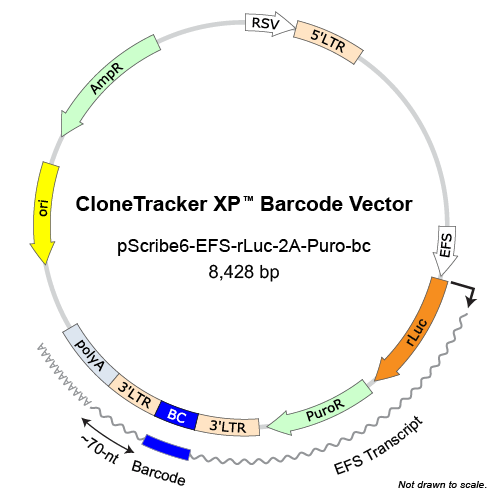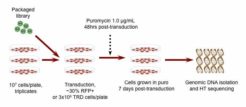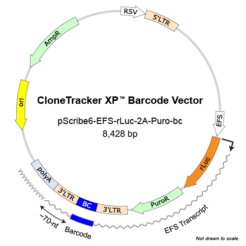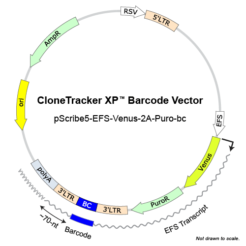CloneTracker XP 10M Barcode-3′ Library in pScribe6-rLuc-Puro (DNA)
10.250,00 €
Description
Cellecta CloneTracker XP-rLuc have the same design as the its other CloneTracker XP Libraries, with a barcode interested 3′-UTR of the reporter transcript so it is detectable by RNA sequencing. Rather than a fluorescent protein marker, however, CloneTracker XP-rLuc library have a red-shifted luciferase (rLuc) derived from Photinus pyralis (Ppy RE9 mutant) as a reporter for bioluminescent imaging (BLI).
Luciferase reporters provide a useful tool for indirect cell labelling and tracking of cell fates in vivo. While the BLI technique has been successfully used for monitoring of migration, growth, and viability associated with drug treatment of transplanted cancer, stem, or immune cells in mouse models, standard luciferase assays in animal models are particularly sensitive because they are not subject to high background as a result of tissue auto-fluorescence. The codon-optimized Photinus pyralis far-red luciferase in the XP-rLuc Library offers enhanced sensitivity and resolution in deep tissue-50-100-fold better light intensity than the click beetle (Renilla) enzyme.




